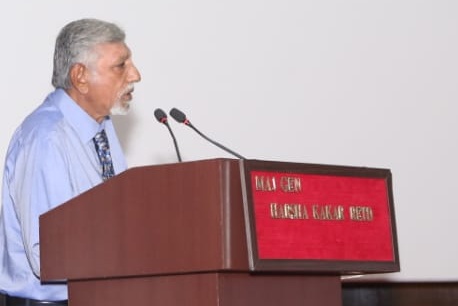
Amid the ongoing crisis arrives the Rafale (English Version) Amar Ujala 30 Jul 2020
https://www.amarujala.com/columns/opinion/rafale-aircraft-can-change-the-game?src=top-lead
Amid the ongoing crisis arrives the Rafale (English Version) Amar Ujala 30 Jul 2020
The standoff in Ladakh continues and both sides are building forces to match the other. Talks between the military commanders and WMCC (Working Mechanism for Consultation and Coordination on Border Issues) have yet to yield substantial results. There are concerns that the stalemate may continue for a prolonged duration or the situation may escalate, in case the Chinese seek to move further forward. The armed forces are prepared for either scenario. Forces have been inducted to counter any Chinese adventurism.
The army has inducted its latest long- range artillery, including the M 777 imported from the US. The navy is out in the Indian ocean seeking to project its power in crucial regions as a threat-in-being to China. Its exercises with the QUAD and the US, display its ability to dominate major Chinese shipping routes. The air force has deployed some resources into Ladakh, while activating its bases in the plains sector to counter Chinese airpower.
Amid this scenario, the first five, of the ordered 36 Rafale aircraft, arrived in India yesterday, completing a 7000 km flight from France, and would be deployed at Ambala as part of the 17 Squadron ‘Golden Arrows’. The aircraft had a halt in the UAE on its route into the country. These are being purchased at a cost of Rs 58,000 crore. The aircraft would arrive in a configuration of 28 single seater and eight double seater.
This 4.5 generation aircraft would possess the latest avionics and armoury, India specific, making them the most versatile aircraft in the Indian air force inventory. The Rafale is referred to as the ‘omnirole’ aircraft by its manufacturers and can perform multiple tasks including air supremacy, interdiction, aerial reconnaissance, deep ground strike, anti-ship strike and nuclear deterrence missions.
The air force spokesperson stated, ‘IAF aircrew and ground crew have undergone comprehensive training on the aircraft, including its highly advanced weapons systems and are fully operational now. Post arrival, efforts will focus on operationalization of the aircraft at the earliest.’ With all equipment essential for its maintenance and ammunition for its operational use having reached India, the aircraft would be operationalized in a short time. India currently does not possess the luxury to take the normal few months needed to make the aircraft operational. It is expected to maintain a high mission rate.
The choice of Ambala as the base is due to operational considerations. Ambala is located 200 Kms from the Pakistan border and almost the same distance from the LAC. Hence, the aircraft can handle both adversaries from the same base. The advantage of deploying at Ambala viz-a-viz the Chinese is that aircraft from lower bases could lift with larger payload as compared to Chinese aircraft deployed in Tibet, which will have to juggle between fuel load and payload. Infrastructure to house the Rafale has been completed and the base is prepared for its induction. The second squadron would be based at Hashimara in the North East, where similar infrastructure is being prepared.
The current Chinese air force fleet comprises of the J 11, J 12, SU 30 and the J 20, which is currently under induction. They also have one squadron of the SU 35. The Indian air force’s main front line fighters include the SU 30, Mirage 2000, MIG 29, Jaguar, MIG 21 BISON, LCA and the newly inducted Rafale. The Indian fleet is a formidable combination to challenge Chinese airpower and the Rafale would tilt the balance in favour of India.
The air chief, Air Marshall RKS Bhadauria, had stated some time back, ‘Once the Su-30MKI and the Rafale start operating together, it will be a potent combination against our adversaries, be it Pakistan or anybody else. It will be a potent capability. Any adversary would be worried about such a combination.’ It is for this reason that the Indian air force was seeking to induct the Rafale as early as possible.
The environment in Ladakh remains tense, discussions for a resolution continue. In such an environment, there is a requirement to enhance pressure by inducting resources to tilt the balance. The army has deployed matching forces, refusing to provide them any opportunity to China. It is determined to continue with its deployment through the winters. This restricts military options for China. The naval domination of the shipping corridors in the Indian Ocean, where it has the capability would restrict the move of Chinese mercantile shipping.
Air power is another major dimension of deterrence. In case of ground operations, it is airpower which can tilt the balance. The induction of the Rafale and its early operationalization send forth a strong message on Indian determination and intentions. While India seeks a resolution through dialogue, it is prepared for expansion of the conflict. The Rafale, though yet to be fully received, would tilt the battle in India’s favour.